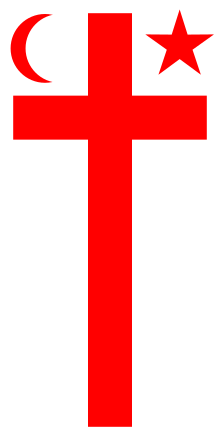Grand Council (Mi'kmaq): Difference between revisions
Hantsheroes (talk | contribs) |
|||
| Line 13: | Line 13: | ||
== District Councils == |
== District Councils == |
||
The Mi'kmaw territory was divided into seven traditional "districts". Each district had its own independent government and boundaries. The independent governments had a district chief (''[[sagamore (title)|Sagamaw]]'') and a council. The district council members were band chiefs, elders, and other worthy community leaders. The district council was charged with performing all the duties of any independent and free government by enacting laws, justice, apportioning fishing and hunting grounds, making war, suing for peace, etc. |
The Mi'kmaw territory was divided into seven traditional "districts". Each district had its own independent government and boundaries. The independent governments had a district chief (''[[sagamore (title)|Sagamaw]]'') and a council. The district council members were band chiefs, elders, and other worthy community leaders. The district council was charged with performing all the duties of any independent and free government by enacting laws, justice, apportioning fishing and hunting grounds, making war, suing for peace, etc. |
||
Mi'kmaw historian [[Daniel N. Paul]] notes many individual Mi'kmaq did indeed volunteer and serve with the Continental army as per the terms of the Treaty. However the Signators who signed on were representing their Districts only; its part of Mi'kmaq Treaty protocol that each District was Sovereign and could sign Nation to Nation agreements; then they would return home to present the agreements to the Mi'kmaq Grand Council, the Council of Women and finally to all citizens, which if consensus occurred, the newly signed Treaty would be ratified District by District. |
|||
== Local Chiefs == |
== Local Chiefs == |
||
Revision as of 18:01, 24 December 2012

The Grand Council (also known as Santé Mawiómi) is the traditional senior level of government for the Mi'kmaq people until the Indian Act was created (1876). After the Indian Act the Grand Council adopted a more spiritual function. The Grand Council was made up of representatives from the seven district councils in Mi'kma'ki. The Grand Council was composed of Keptinaq, or captains in English, who were the district chiefs. There were also Elders, the Putús, the women council, and the Grand Chief.
The Putus recorded the Mi'kmaw Grand Council meetings through stories and the creation of Wampum belts. They also dealt with the treaties with the non-natives and other Native tribes.
The traditional Grand Council continues to exist, but its authority to govern has been largely transferred by the Indian Act to the elected Chiefs and Councils.[1]
Grand Chief
The Grand Chief was a title given to one of the district chiefs, who was usually from the Mi'kmaq district of Unamáki or Cape Breton Island. This title was hereditary and usually went to the Grand Chief's eldest son. The Grand Council met on a little island on the Bras d'Or lake in Cape Breton called "Mniku", on a reserve today called Chapel Island or Potlotek. To this day, the Grand Council still meets at the Mniku to discuss current issues within the Mi'kmaq Nation.
On June 24, 1610, Grand Chief Membertou converted to Catholicism and was baptised. He concluded an alliance with the French Jesuits affirming the right of Mi'kmaq to choose Catholicism and\or Mi'kmaw tradition. The Mi'kmaq, as allies with the French, were amenable to limited French settlement in their midst.
District Councils
The Mi'kmaw territory was divided into seven traditional "districts". Each district had its own independent government and boundaries. The independent governments had a district chief (Sagamaw) and a council. The district council members were band chiefs, elders, and other worthy community leaders. The district council was charged with performing all the duties of any independent and free government by enacting laws, justice, apportioning fishing and hunting grounds, making war, suing for peace, etc.
Mi'kmaw historian Daniel N. Paul notes many individual Mi'kmaq did indeed volunteer and serve with the Continental army as per the terms of the Treaty. However the Signators who signed on were representing their Districts only; its part of Mi'kmaq Treaty protocol that each District was Sovereign and could sign Nation to Nation agreements; then they would return home to present the agreements to the Mi'kmaq Grand Council, the Council of Women and finally to all citizens, which if consensus occurred, the newly signed Treaty would be ratified District by District.
Local Chiefs
The Local Chief looked after the affairs of the village community. He presided over the "Council of Elders", the governing body of the village. This group was made up of family heads or representatives.
Band Council
There are approximately 35 reserves scattered across Nova Scotia today, all allotted to and administered by thirteen First Nation Mi’kmaw communities established since 1958-59. Each community has its own leadership known as the Band Council, with an elected Chief and several Councilors. The traditional Grand Council continues to exist, but its authority to govern has been largely transferred by the Indian Act to the elected Chiefs and Councils.[2]
References
Texts
